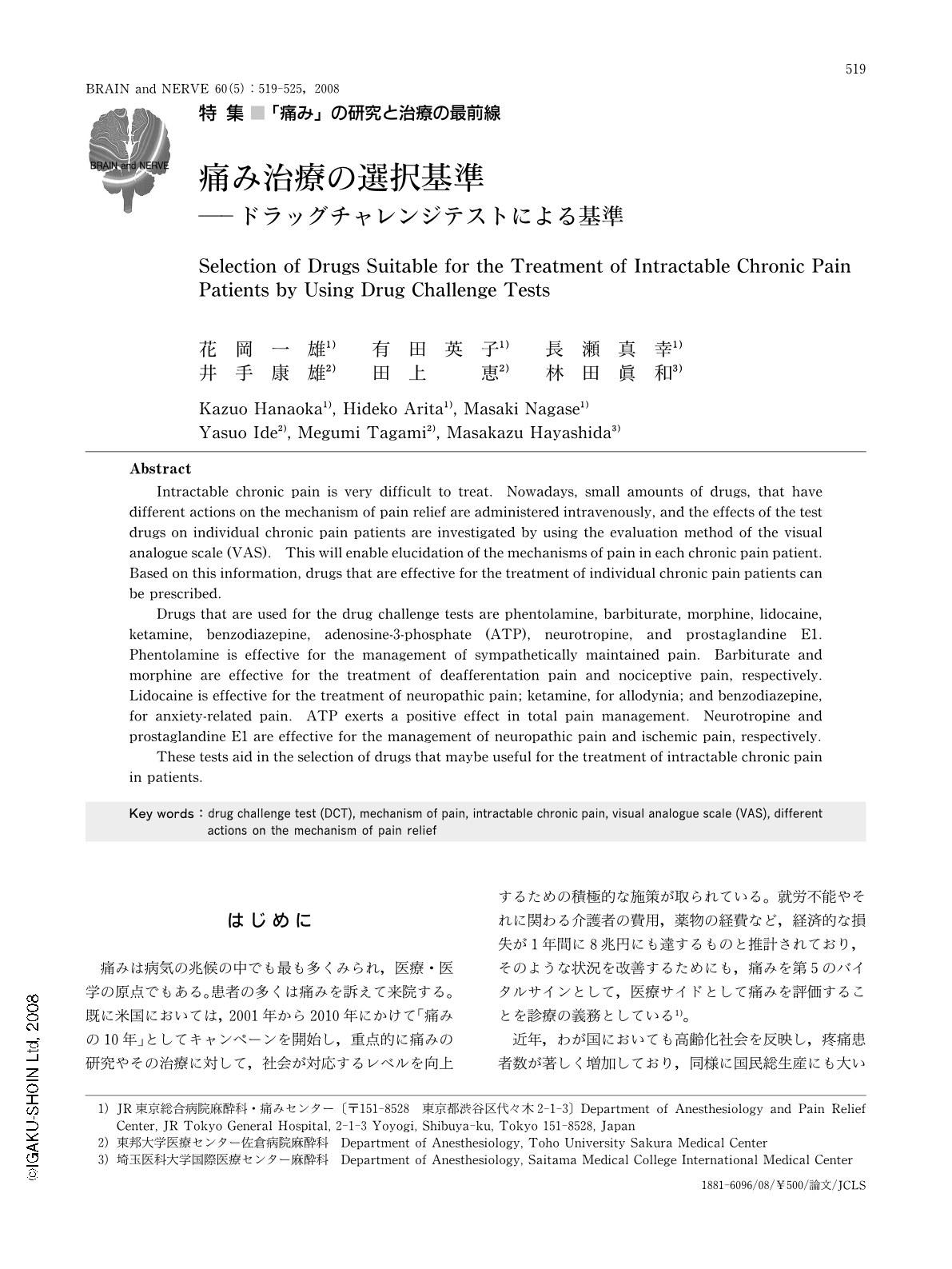Japanese
English
- 有料閲覧
- Abstract 文献概要
- 1ページ目 Look Inside
- 参考文献 Reference
はじめに
痛みは病気の兆候の中でも最も多くみられ,医療・医学の原点でもある。患者の多くは痛みを訴えて来院する。既に米国においては,2001年から2010年にかけて「痛みの10年」としてキャンペーンを開始し,重点的に痛みの研究やその治療に対して,社会が対応するレベルを向上するための積極的な施策が取られている。就労不能やそれに関わる介護者の費用,薬物の経費など,経済的な損失が1年間に8兆円にも達するものと推計されており,そのような状況を改善するためにも,痛みを第5のバイタルサインとして,医療サイドとして痛みを評価することを診療の義務としている1)。
近年,わが国においても高齢化社会を反映し,疼痛患者数が著しく増加しており,同様に国民総生産にも大いに影響する重要な問題になりつつある。そのためにも,痛みのメカニズムの解明や治療法の選択などの研究が急務とされている。
Abstract
Intractable chronic pain is very difficult to treat. Nowadays, small amounts of drugs, that have different actions on the mechanism of pain relief are administered intravenously, and the effects of the test drugs on individual chronic pain patients are investigated by using the evaluation method of the visual analogue scale (VAS). This will enable elucidation of the mechanisms of pain in each chronic pain patient. Based on this information, drugs that are effective for the treatment of individual chronic pain patients can be prescribed.
Drugs that are used for the drug challenge tests are phentolamine, barbiturate, morphine, lidocaine, ketamine, benzodiazepine, adenosine-3-phosphate (ATP), neurotropine, and prostaglandine E1. Phentolamine is effective for the management of sympathetically maintained pain. Barbiturate and morphine are effective for the treatment of deafferentation pain and nociceptive pain, respectively. Lidocaine is effective for the treatment of neuropathic pain; ketamine, for allodynia; and benzodiazepine, for anxiety-related pain. ATP exerts a positive effect in total pain management. Neurotropine and prostaglandine E1 are effective for the management of neuropathic pain and ischemic pain, respectively.
These tests aid in the selection of drugs that maybe useful for the treatment of intractable chronic pain in patients.

Copyright © 2008, Igaku-Shoin Ltd. All rights reserved.


